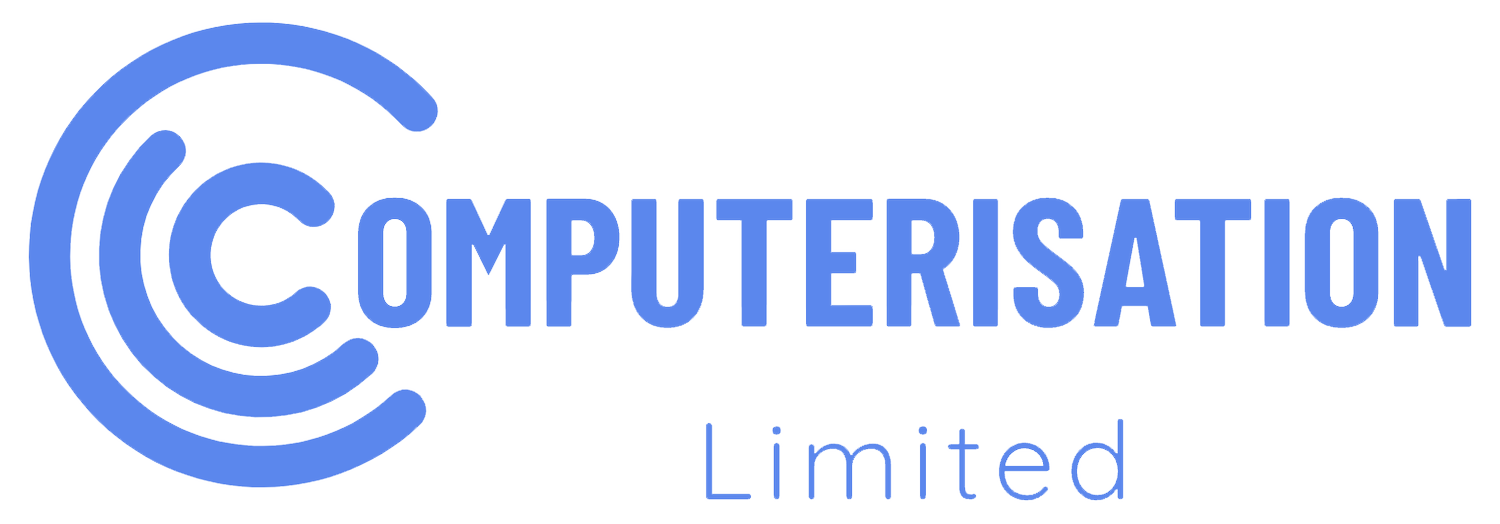How Cloud Computing emerged and how it should have transformed your business.
Cloud Computing on multiple devices
It was not that long ago that every business of a certain size had its own on-premise server. That brought in several responsibilities, namely backup, security and uptime. Businesses were highly dependent on this server, or servers. If something went wrong, business stopped, either temporarily (down time) or occasionally permanently (data loss).
Only a few decades ago, moving data from a server in one office to another involved expensive leased lines and often incurred a lot of time to transfer moderate levels of data.
Therefore, inter-branch communications were slow/expensive and backing up to off-site involved for most streaming tapes, external discs or even USB sticks to take their data off site to protect it from a disaster (Fire/flood/theft etc.).
Then the internet emerged, slowly at first with point to point dial up connections over existing telephone lines. Within a few years broadband replaced dial up and internet speeds were blindingly fast, or so we thought at the time, lets face it, it was considerably faster than anything else we had before. In reality about 1/50th of the speed that we are used to now.
This brought in reliable email services and allowed us to connect to company servers across the country, and the world. A further progression of this was for businesses to provide servers for hire, or more typically space on a server to hire. This was the birth of Cloud Computing.
Now businesses could create secure backups of their data in safe locations within secure data centers. Having solved that problem, data could now be easily shared between remote offices and with stakeholders externally.
At the same time, we all started using cloud services personally. Mainly for photo sharing and storing the documents we were working on, in a virtual USB stick, by using a software Cloud services such as Dropbox, One Drive or Google Drive. This created the need to have these services on mobile devices, such as phones and iPads.
Subsequently that drove the idea that we could now run our business processes, or some of them on portable devices. Consequently we started using laptops and mobile devices more and more and PC’s less and less.
With our data no longer in a physical box we had to protect it with login credentials and passwords. This became increasingly more difficult as we could not be trusted to use sensible passwords, instead a crazy proportion of people just used simple passwords such as ‘Password’. Therefore, password complexity kicked in. Now we had to have a minimum password length, so many capital letters, so many numbers and so many special digits, and everyone’s special digits were different!! Recently biometric authentication has started to take over, with finger or facial recognition and we hope to see these new technologies become more dominant in the future.
Data centers grew and evolved brining out new services such as virtual servers and virtual PC’s in the Cloud. This diminishes the need for many larger businesses and organisations to have complex hardware on-site, supported by a team of skilled on-site technicians. All that is needed these days, is an access point for each staff member to access all the resources required in the Cloud. This is no longer a PC with dozens of programs installed on it, it is just a simple PC or device called a thin client. The only other requirement is a reliable broadband connection.
Staff no longer need to be physically connected to the office LAN (Local area network), neither do the technicians. IT support services can be very easily out-sourced these days so specialist skills are readily available and affordable when required.
When the pandemic struck in 2020 many businesses and organisations had already adopted some measure of Cloud Computing, therefore home working was easily enabled. Those businesses who had not faced temporary business closure as lockdown became a reality.
We had several clients who had databases running on on-site premise servers, and we able to transfer their database system into the cloud. This allowed them to keep running and providing the vital services their businesses provided.
Post lockdown, all but a few of these clients made their database move to the Cloud permanent. The few who did not, postponed a permanent move to the Cloud whilst their rural broadband remains so slow.
If you are a business owner who has yet to adopt Cloud Computing here are a few things to think about:-
· On site servers are expensive to buy and maintain
· Disaster planning is largely done for you, particularly if you use the right Cloud service provider
· Remote working is becoming important to both large and small businesses
· Remote Working allows you to employ someone special who lives beyond normal a commuting distance
· Highly monitored cloud services are more reliable than on-site servers
· Virtual servers can expand to meet your growing business data needs
· Collaboration is much easier when people in different locations can share data and documents
· Cloud Computing brings your data to portable devices whilst out and about
Click Here to discuss your requirements with our knowledgeable team of software development professionals.
Pick up the Phone: 02920 712 664

